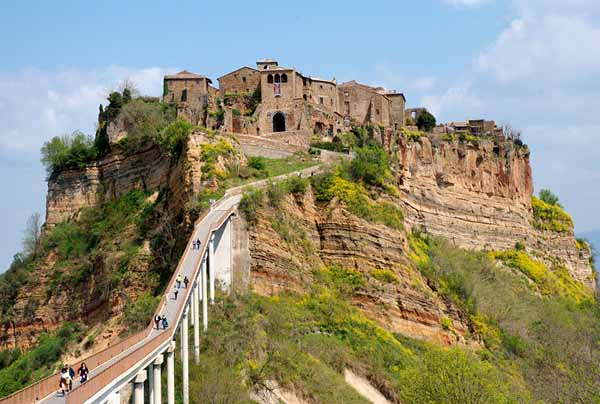This powerful civilization held great influence particularly in North and Western Italy. However, very little evidence remains of their contributions to modern society.
The Etruscans were a people of little known origin who became prominent in a large part of Italy in the 8thCentury BC. Eventually they surrendered to the Romans in the 3rd-Century BC but their influences continued to pervade particularly in religion, civil engineering and urban planning. Much of these influences are still evident today.
Etruscan Origins
Historical opinions differ on the origins of the Etruscans but it is generally thought that they developed as a result of Villanovan culture, which is characterised by the practice of cremating the dead and burying their ashes in urns. As seafarers, they built a trading relationship with the Mediterranean populations. Evidence shows they were an advanced civilization, wealthy and supreme but due to the lack of recorded literature disappeared from the history sheet. Many of the opinions have been formed by the study of city walls, houses, monuments and tombs, especially in Tuscany and Umbria. The archaeological evidence unearthed at these sites and religious sanctuaries show their particular accomplishment in metalwork and other artefacts. However, little Etruscan literature remains and the language of the inscriptions only partly deciphered.
Etruscan Expansion and Downfall
By the mid 7th Century BC the major Etruscan towns had been founded, largely motivated by a continued threat from Greece who were expanding their hold on Sicily and Southern Italy. They continued to conquer in North and West Italy from the Apennine mountains where populations were more scattered and less unified.
In the 6th Century BC, they became influential in many major cities including Rome, which had previously been a small collection of villages. This powerful relationship with the Latin city enabled the Etruscan culture to flourish. The Etruscan ‘Tarquin’ Dynasty provided three of the seven Roman Kings during the Roman Empire.
The Etruscan stronghold however began to falter towards the latter part of the century when Rome chose to become a Republic and many Etruscan cities were defeated or absorbed into peaceful relationships with the influential and powerful Romans.
Etruscan Characteristics
The Etruscan language is a mystery but is considered similar in dialect to some Greek cultures but otherwise very different from other Mediterranean languages. Etruscan inscriptions use the Greek alphabet, and many have been deciphered, but the exact meanings of words are widely unknown. The preservation of its language apparently held little importance and very few translations to Latin exist. Most of the written language that has survived pertains to spiritual traditions.
The Etruscans believed in the supernatural, after life and divination. Ceremonies and rituals were therefore very important to them. Their tombs often resembled their houses and everyday common objects including food, drink and clothing were left for their after life. Many of the necropolises discovered have painted scenes and frescoes of Etruscan life and have provided important information about how they lived.
The Etruscans built a thriving and agricultural civilisation, which influenced large parts of Italy, and particularly Rome, the evidence of which is contained within its history. They were also skilled artisans and engineers producing important advances in cultural and artistic terms, demonstrated in their paintings, jewellery, ceramic, and pottery ware. Much of what is known about the Etruscans is drawn from this very scarce but informative evidence base.








